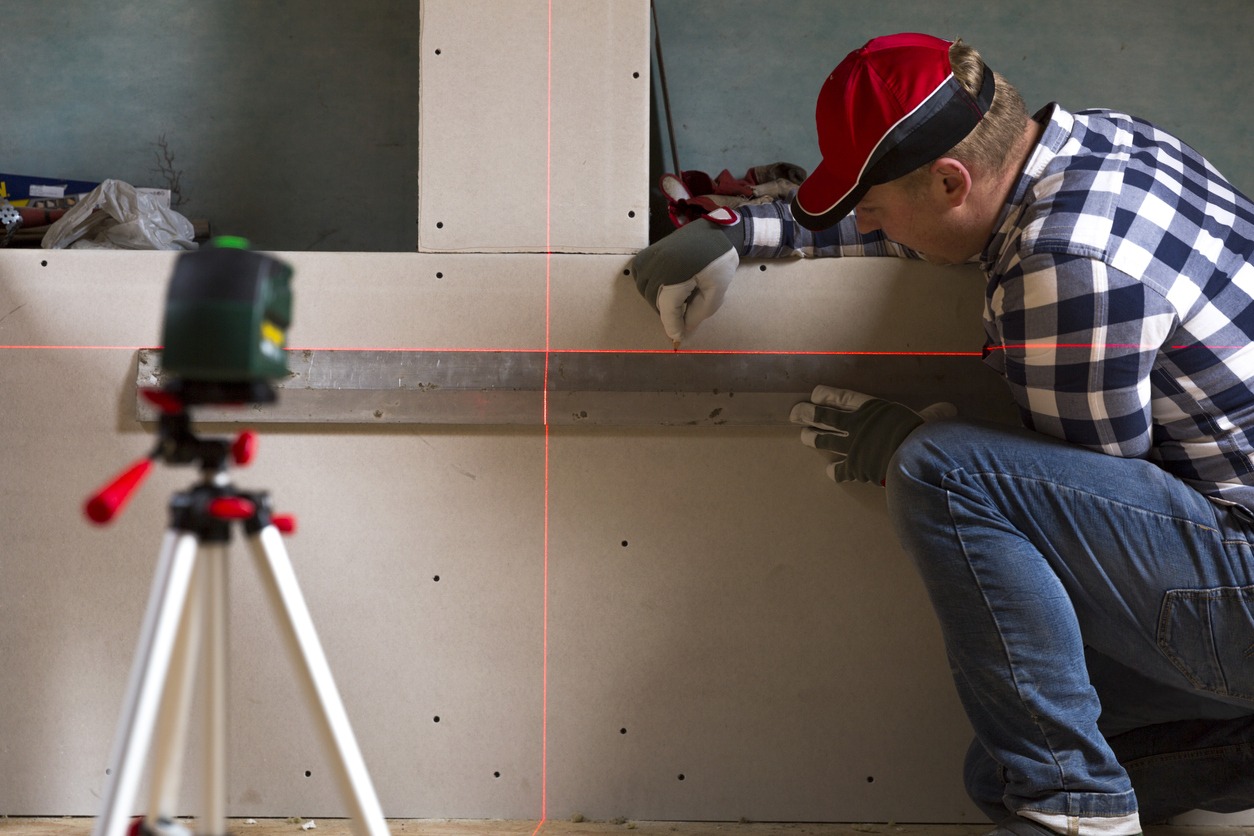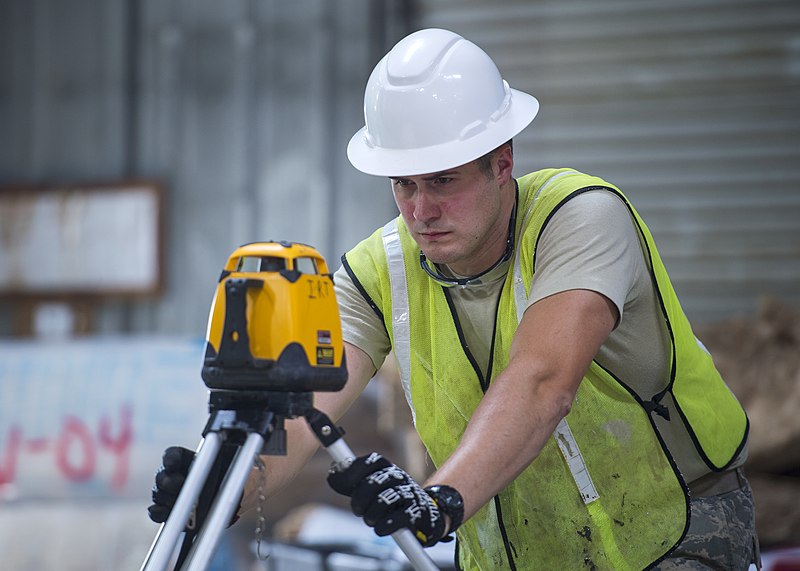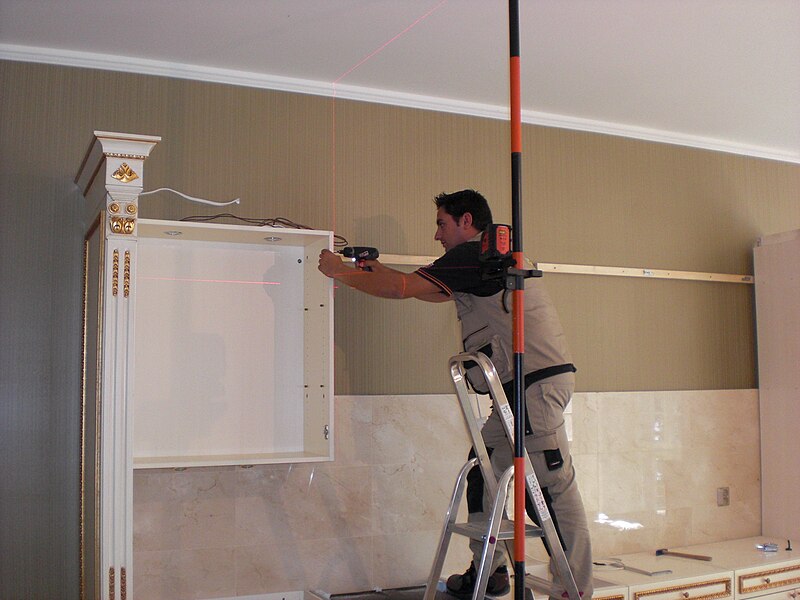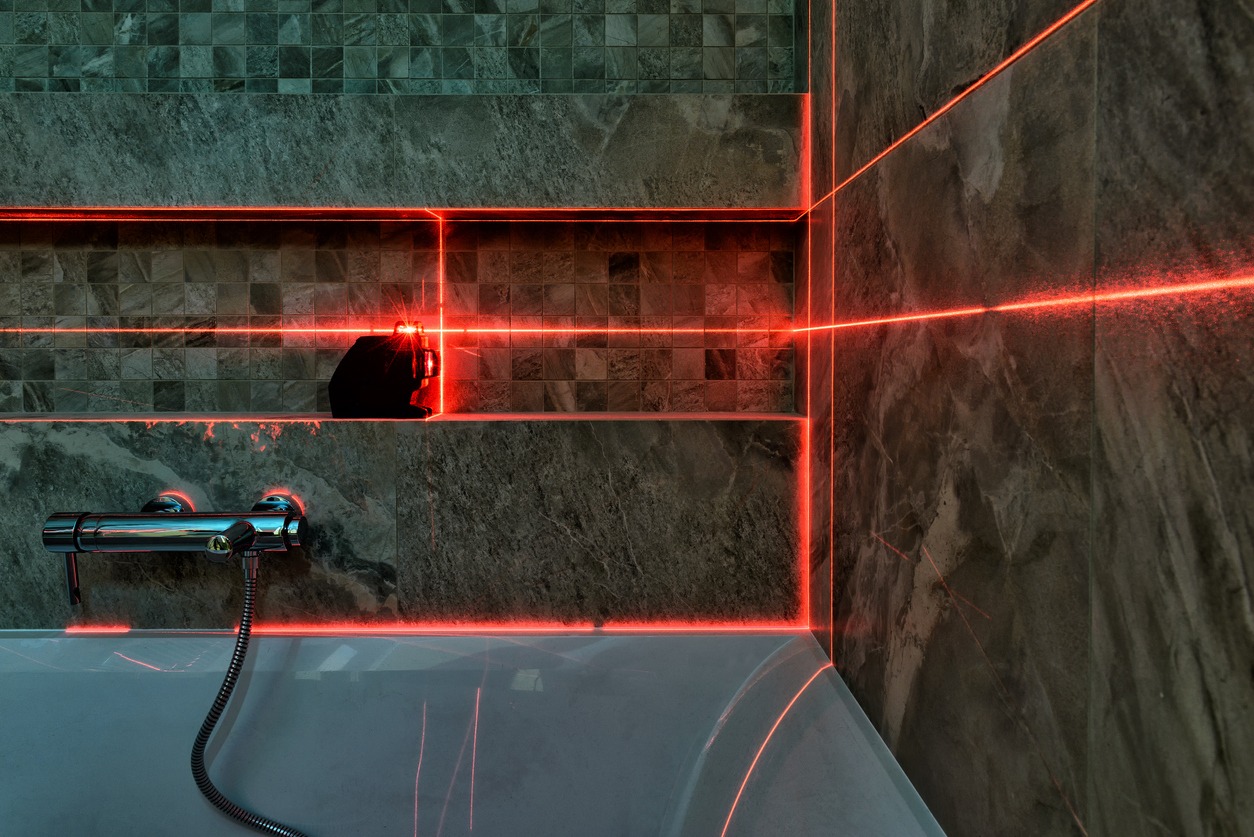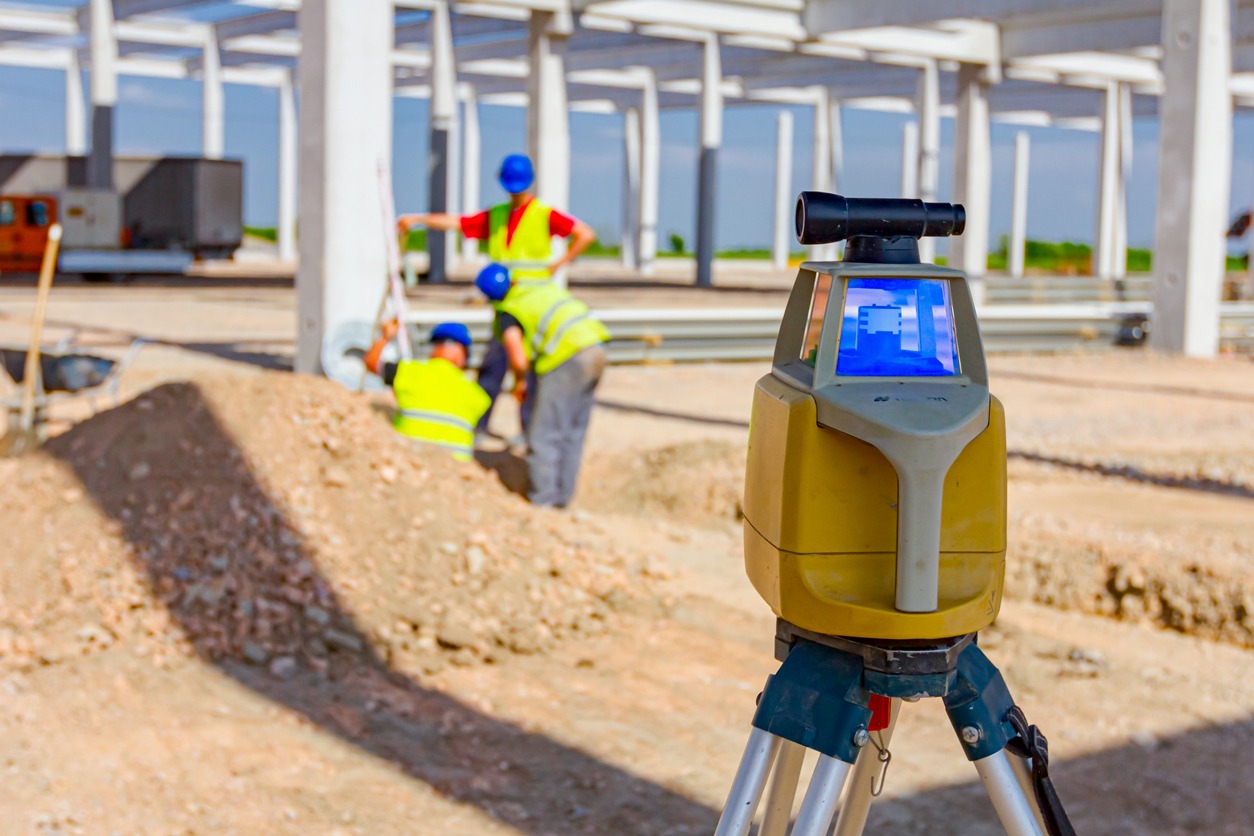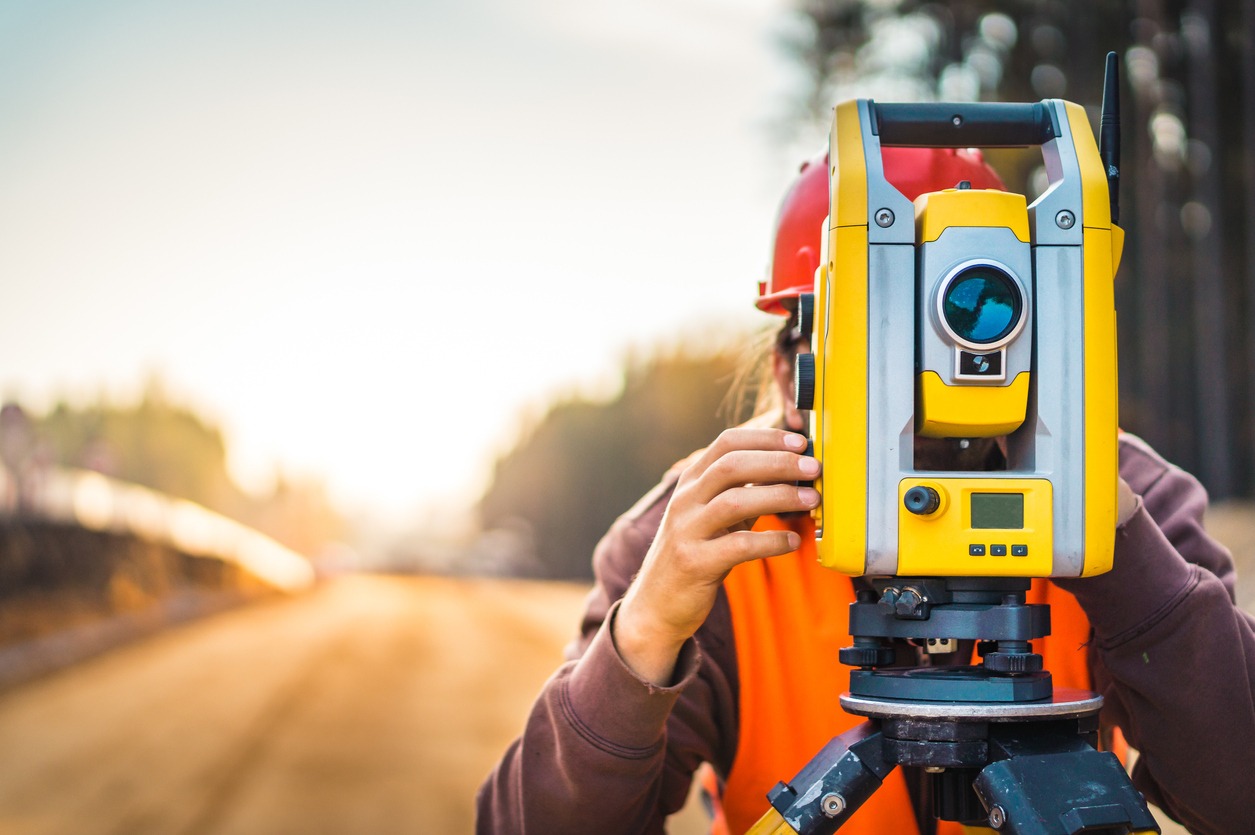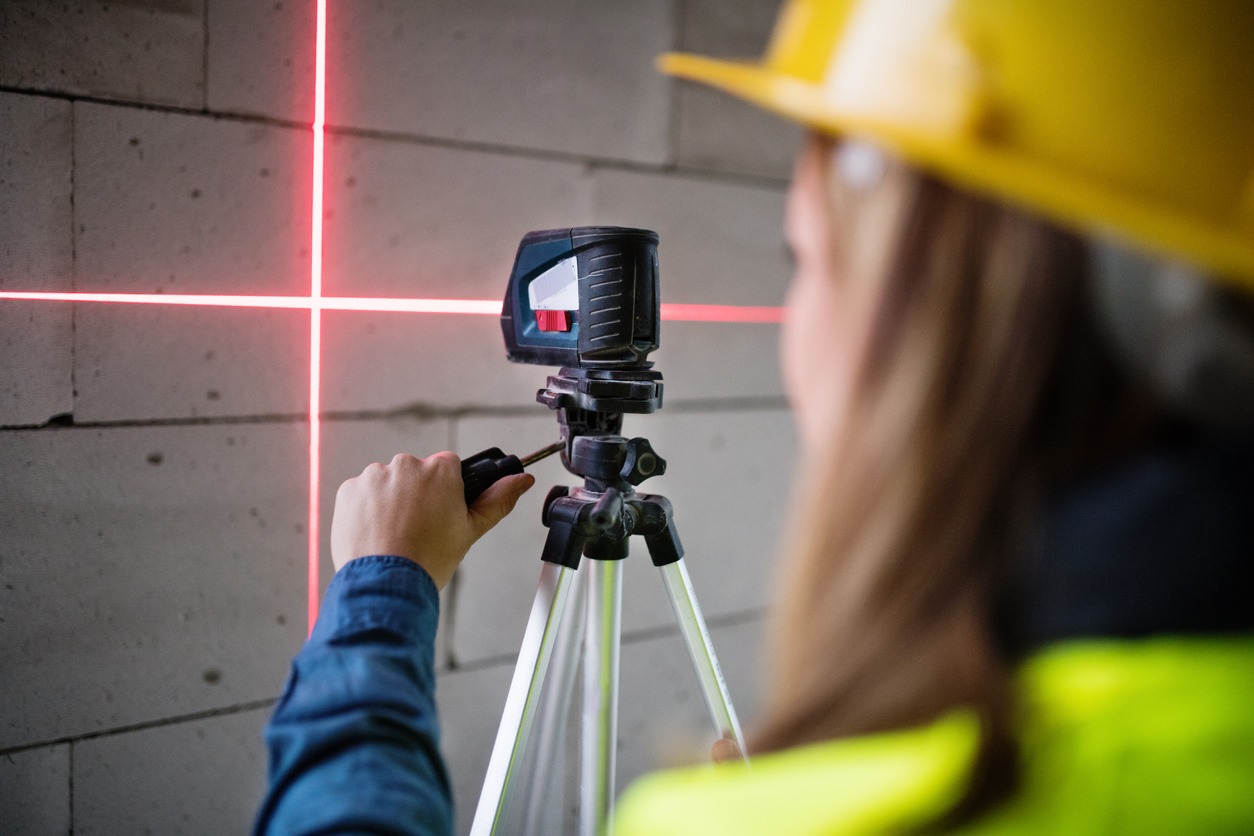Lasers have become an indispensable tool in the construction industry, offering precision and efficiency in a variety of tasks. These devices project a steady, straight line of light that can be used as a guide or level reference in numerous construction applications. Common uses include installing ceiling tiles, chair railings, and ensuring electrical receptacles are positioned accurately in buildings under construction. The reliability of laser levels allows for the alignment and placement of structural components with a high degree of accuracy, which is essential for both the integrity and aesthetics of a construction project.
Incorporating different types of laser levels like cross line, rotary, and combination lasers, construction professionals are able to select tools tailored to specific jobs. Cross line lasers emit intersecting horizontal and vertical lines, and are well-suited for tasks like tiling and cabinetry. Rotary lasers emit a 360-degree beam around the tool, which provides a horizontal or vertical plane across an entire room or workspace. They are often utilized for jobs requiring a broader range, such as setting foundations or grading a site. Combination lasers offer the flexibility to project lines and points simultaneously or independently in both horizontal and vertical modes, making them suitable for projects that demand both types of reference points.
Additionally, laser technology plays a crucial role in building information modeling (BIM), allowing for accurate and thorough design planning. Laser scanning can detect discrepancies on-site, enabling real-time conflict resolution between various systems such as electrical, plumbing, and HVAC. The ability to rapidly document errors, hand off work, and reduce change orders enhances the overall efficiency and effectiveness of construction projects. With such versatility and accuracy, lasers are key in ensuring projects meet design specifications and are completed with a high standard of quality.
Fundamentals of Construction Lasers
Construction lasers are pivotal tools in modern construction, enabling precision and efficiency. They are used to create level planes and accurate reference points, vital for various construction tasks.
Laser Technology and Principles
Construction lasers operate on the principle of emitting a focused beam of light that is used as a stable reference line or point. This laser beam is both straight and thin, which is crucial for precision tasks in construction. They work by projecting this laser onto a surface or space to determine straight lines and accurate measurements. Laser technology is based on coherent light, which means the light waves are aligned, producing a sharp, intense beam.
Types of Construction Lasers
There are several types of construction lasers, each designed for specific tasks:
- Rotary Laser Levels: Emit a 360-degree beam around the device, creating a “chalk line” in all directions.
- Line Laser Levels: Project a straight horizontal or vertical line that is visible across a surface.
- Pipe Lasers: Used for aligning pipes in construction and are particularly useful in laying underground pipework.
These lasers replace traditional leveling methods, offering a significant increase in accuracy and efficiency for construction projects.
Applications of Lasers in Construction
Lasers in construction offer precision and efficiency across various tasks from initial surveying to the final installation of systems. The technology aids in ensuring that elements such as levels and alignments are executed to exact specifications.
Surveying and Mapping
Laser scanning technology captures detailed data to create point clouds, forming a 3D coordinate system essential for surveying construction sites. This level of accuracy is crucial for exact documentation of site conditions and helps in planning the layout of a project.
Leveling and Alignment
Construction lasers provide accurate leveling and alignment for posts, beams, and structural components. Tools like rotary laser levels emit a 360-degree beam to determine both horizontal and vertical lines, ensuring structures are plumb and aligned in accordance with design specifications.
Grading and Excavation
Setting the right grade is critical in construction for maintaining proper drainage and irrigation. Laser levels with slope capabilities assist in grading by providing precise elevation levels, which guides the excavation process and ensures that the foundation work adheres to the planned contours.
Installation Assistance
Lasers are indispensable for the installation of electrical, plumbing, or HVAC systems, allowing workers to spot discrepancies and avoid costly change orders. The immediate sharing of this laser-derived information facilitates documentation of errors and the efficient hand-off of work between different trades.
Laser Equipment and Tools
In the realm of construction, laser tools are essential for achieving precision and efficiency. These instruments offer critical support in establishing accurate references for both the horizontal and vertical planes.
Laser Levels
Laser levels are indispensable tools that provide a level reference for a plethora of construction tasks. They emit either a red or green beam, often generated by a laser diode, which can be detected visually or with a laser detector. Self-leveling laser levels automatically find and maintain a level within a specified range, while manual leveling lasers require manual adjustments to achieve accuracy.
Rotary Lasers
Rotary lasers project a continuous 360-degree laser beam around the vertical or horizontal axis, making them ideal for outdoor use. They are suited for tasks that require a level reference over a large area. The rotating head of these lasers emits a beam that can be used with a laser detector to extend the laser’s visibility range.
Laser Detectors
Laser detectors, also known as laser receivers, are devices that detect a laser beam emitted by laser levels, especially in bright conditions where the beam might be otherwise invisible to the naked eye. These detectors are often equipped with an audible signal to indicate the level position and are used in tandem with rotary lasers to capture the laser beam over long distances or in outdoor conditions.
Line Generators
Line generators, or line laser levels, project a straight line onto a surface and are often used for indoor applications such as tiling or installing cabinetry. These tools can produce a cross-line where both horizontal and vertical lines intersect, providing references for both planes simultaneously.
Laser Receivers
Laser receivers are designed to capture the laser beam from a distance, specifically when the human eye cannot see the beam, such as in bright lighting or over extensive ranges. These devices are typically clamped to a grade rod and offer visual or audible cues to help locate the laser level’s beam for precise measurements.
Practical Use Cases for Lasers in Construction
Lasers in construction have revolutionized how measurements and alignments are performed, enhancing precision for both indoor and outdoor projects. Their use ranges from setting out floor plans to capturing detailed 3D site data.
Indoor Construction Tasks
In indoor settings, line laser levels are instrumental for achieving precise horizontal and vertical alignment. They ensure walls and partitions are straight, which is crucial when installing ceiling tiles or cabinets. For instance, a contractor might rely on a line laser level to accurately install a chair railing along a living room wall, maintaining consistency in height around the room.
- Aligning and Leveling: They are used to project level lines for installing cabinetry, laying tiles, and fitting trim.
- Ceiling Tiles: Ensuring perfect alignment across the grid system
- Chair Railings: Achieving a consistent height continuity around a room
- Placement of Fixtures:
- Receptacles: Aligning outlets and switches accurately along a wall
- Cabinets: Ensuring level installation of cabinets both at base and upper positions
Outdoor Construction Projects
Outdoor construction greatly benefits from rotary laser levels, which provide a 360-degree plane of reference. This is essential in tasks like creating a grading plan or setting elevation controls for excavation. When installing complex systems such as a sewer pipe, lasers provide the necessary precision to ensure proper grading and alignment.
- Surveying and Mapping:
- Data Collection: Generating high-resolution point clouds to map out terrain and structures
- Measurement: Providing accurate dimensions and elevations for site planning
- Grading and Excavation:
- Creating a grading plan: Establishing proper drainage and foundation levels
- Aligning structural components: Ensuring accurate placement and alignment of foundational elements
Specialized Construction Applications
Lasers serve specialized roles, such as in construction surveying, where they capture extensive data to create point clouds for precise modeling. This high-definition surveying enables accurate mapping of an area to aid in the design and planning phases.
- High-Definition Surveying (HDS):
- Point Clouds: Detailed 3D representations to guide planning and modifications
- Alignment for Specialized Equipment:
- Installation of Machinery: Ensuring precision in the positioning for operational efficiency
Features and Considerations
When selecting a laser for construction purposes, professionals weigh features centered around accuracy, durability, and visibility. Each aspect serves a critical function in varying environments and types of work within the construction industry.
Accuracy and Precision
Laser levels are indispensable in the construction industry for providing accurate and precise references for tasks such as grading, hanging pictures, installing fences, and setting up drainage systems. Indoor applications may include aligning chair railings or installing ceiling tiles, while outdoor uses might range from laying out foundation footings to aligning pipes with pipe lasers. The precision of laser levels often replaces manual measurements and aids in:
- Level lines: Perfectly horizontal or vertical projections.
- Plumbing: Ensuring structures or fittings are perfectly vertical.
Durability and Ruggedness
The ruggedness and durability of construction lasers are vital for performance in challenging job site conditions. These devices often come mounted on a tripod to ensure stability and are designed to withstand outdoor elements. A construction laser’s durability is reflected in its ability to resist drops, dust, water, and temperature extremes.
Laser Visibility and Range
The visibility and range of the laser are critical for various tasks, with brighter lasers needed for sunlit outdoor sites and longer ranges necessary for large-scale projects. Lasers in the construction industry offer:
- Indoor visibility: For environments with controlled lighting.
- Outdoor range: Enhanced performance for sites exposed to natural light.
Professionals should consider these factors diligently while researching and investing in laser levels to ensure optimal performance for the specific needs of their construction projects.
Choosing the Right Laser for Construction
Selecting the appropriate laser for construction tasks is critical for enhancing accuracy and efficiency. The choice depends on specific job requirements, laser functions, and reliability.
Assessing Construction Needs
When determining construction needs, professionals consider the types of tasks—be it leveling ground, aligning structures, or transferring elevations. Dot lasers are ideal for emitting a small, precise spot on a surface. They excel in tasks such as transferring points from floor to ceiling. In contrast, a line laser projects straight lines across a surface and is commonly used for installing pipes or tile. For larger scale projects requiring 360-degree lines, a rotary laser that spins to emit a line around the entire room is most suitable. This type of laser often pairs with a laser receiver to capture the laser signal over long distances, making it useful for outdoor applications.
Comparing Laser Models
After defining the scope of the project, comparing available laser models is the next step. For example, Johnson Level and Topcon offer various construction tools, including lasers designed for precision and robustness. These lasers often feature different rotational speeds, with the motor‘s quality influencing the line’s visibility and accuracy. The presence of features like electronic self-leveling can contribute to the laser’s ease of use and time-saving capabilities. Additionally, some tools are designed to project both horizontal and vertical lines simultaneously, which are beneficial for complex layouts.
Brand and Quality Considerations
Finally, considering the brand and quality of the construction laser is paramount. Well-established brands such as DeWalt and Bosch are renowned for their reliable and high-quality construction tools. While newer brands may offer competitive pricing, it’s crucial to ensure that these alternatives do not compromise on durability and accuracy. Ensuring the presence of a warranty or a good customer service record can be a determining factor. Accessories, such as a leveling rod to measure differences in elevation are also important considerations. Additionally, whether for indoor or outdoor use, the construction laser’s ability to operate in various environmental conditions and the inclusion of a robust protective casing can influence a professional’s choice.
Setup and Safety
In the world of construction, lasers are pivotal for aligning structures and ensuring precision. Proper setup and adherence to safety guidelines are crucial for the effective operation of construction lasers, both for indoor and outdoor projects ranging from surveying to underground pipe installation.
Operating Construction Lasers
Construction lasers, indispensable for creating plumb lines and precise alignments, require careful setup. Outdoor laser equipment, like line lasers, must be both visible in bright conditions and have sufficient power to reach across large distances. Indoor lasers typically operate at lower power levels but still necessitate clear visibility for tasks such as installing drop ceilings or aligning walls. For manual lasers, setting them up involves ensuring a level base and correct calibration. Automatic lasers self-level, saving contractors valuable setup time. Each type of laser must align with construction elements, from basic framework to complex structures like drainage systems.
Maintenance and Care
Regular maintenance ensures construction lasers function accurately and extend their service life. Basic care includes:
- Cleaning: Keep all optical components free from dust and debris.
- Storage: Store lasers in a secure, dry place to avoid damage from the elements or accidental drops.
- Battery Care: Regularly check and replace batteries to guarantee lasers have sufficient power for operation.
- Inspection: Before use, inspect for any signs of damage or wear that could affect the laser’s performance.
Contractors should refer to the manufacturer’s manual for specific maintenance recommendations for their particular construction lasers.
Health and Safety Guidelines
Health and safety are paramount when working with construction lasers, especially those with a higher class of power. Operators should adhere to OSHA standards and implement safety practices such as:
- Training: Ensure all personnel are trained in safe laser operation.
- Eye Protection: Utilize protective eye wear to shield from laser exposure.
- Warning Signs: Place appropriate warning signage around areas where lasers are in use.
- Barrier Guards: When necessary, install barrier guards to prevent unintended exposure to laser beams, especially in areas where surveying or work with pipe underground is taking place.
Following these guidelines helps to protect workers from potential hazards associated with laser use in construction environments.
Case Studies and Applications
Laser technology in construction has evolved to become a critical tool, showcasing its effectiveness in numerous case studies across residential, commercial, and infrastructure projects. It allows for precise measurements and alignments, crucial to the modern construction process.
Residential Construction
Residential construction projects utilize lasers for a range of applications, ensuring accuracy and improving efficiency. For example, lasers are employed to align and plumb walls, aiding in the precise installation of cabinets. They also establish level lines for wainscoting, or ensure the even height of door or window frames. Outdoor construction, such as decks and porches, benefits from laser technology to align posts and ensure the levelness of structures.
- Line Lasers: Used for aligning tiles, walls, and floors.
- Rotary Lasers: Crucial for establishing leveling floors, they are also handy for outdoor use like setting a grading plan or aligning fence posts.
Commercial Construction
In commercial construction, lasers are indispensable tools. They serve to ensure the alignment of larger scale elements, such as drop ceiling installations and the accurate placement of electrical conduits. Lasers also assist in masonry alignment, keeping the layout of brick and stonework precise.
- 3D Laser Scanning: Captures as-built conditions for accurate record-keeping and potential conflict detection between systems like electrical, plumbing, or HVAC.
- Basic Surveys: Essential for establishing building footprints and verifying the site against the site grading plan.
Civil Engineering and Infrastructure
The scope of civil engineering and infrastructure projects means that laser applications are diverse, ranging from basic surveys for site analysis to monitoring the deflection of structures. They assist in coordinate extraction and management of as-built conditions, often through 3D laser scanning, preventing costly mistakes.
- Deflection Monitoring: Ensures the integrity of existing structures during construction.
- Alignment: Critical for laying out infrastructure such as roads, bridges, and tunnels, where precision is non-negotiable.
By utilizing laser technology, the construction and engineering industries have enhanced the precision and efficiency of both small-scale residential and large-scale commercial and infrastructure projects.
Advancements and Future of Construction Lasers
The construction industry has witnessed a significant transformation with the integration of laser technology. Contractors now regularly employ lasers for their precision, efficiency, and versatility in applications ranging from alignment and leveling to 3D modeling.
Recent Advancements:
- Building Information Modeling (BIM): Laser scanning has become essential for BIM, allowing for the detailed and accurate capture of existing site conditions.
- Increased Power and Efficiency: Modern lasers boast enhanced lifespans and energy efficiency, with some lasers operating for 30,000 hours on compact power sources.
- 3D Laser Scanners: These devices are pivotal in the digital mapping of construction sites, enabling quick and accurate models for analysis and planning.
Research and development in laser technology are continuously pushing the boundaries of what’s possible in construction. For instance, new three-dimensional construction laser scanners hasten task completion, elevate quality control, and mitigate the need for reworks.
Looking Forward:
- The industry anticipates smarter, more connected laser systems that integrate with augmented reality (AR), providing contractors with real-time data overlay on physical job sites.
- Research into autonomous drones and robots equipped with laser technology suggests future construction sites may leverage unmanned systems for surveying and inspections.
The trajectory for construction lasers points to a future where they are central to construction methodologies, driving further advancements in automation and precision. The construction landscape is poised to evolve, with lasers at the forefront of this technological revolution.
Frequently Asked Questions
Lasers in construction are pivotal in enhancing precision and efficiency. They have revolutionized traditional methods with their accuracy and versatility.
How do laser levels improve accuracy in building projects?
Laser levels project horizontal or vertical beams, which serve as a guide to ensure structures are level and plumb. This greatly reduces human error during the construction process.
In what ways are lasers utilized for site grading and excavation?
During site grading and excavation, lasers help set out precise slopes and grades. They provide a reference that ensures earth is moved to the correct level.
What roles do laser tools play in surveying and land measurements?
Lasers provide surveyors with accurate distance measurements, which are essential for mapping out boundaries and preparing construction sites.
Can lasers enhance efficiency in commercial construction projects?
Yes, they can. Laser tools speed up alignment and leveling tasks, which reduces the time required for laying out foundations, piping, and electrical systems in commercial construction.
How are lasers applied in civil engineering to ensure precise alignments?
In civil engineering, lasers are used to align structures like bridges and tunnels with utmost accuracy, ensuring long-term safety and stability.
What advantages do construction professionals gain from using laser guidance systems?
Laser guidance systems enable construction professionals to carry out complex designs with high precision, improving overall quality and reducing waste materials.

